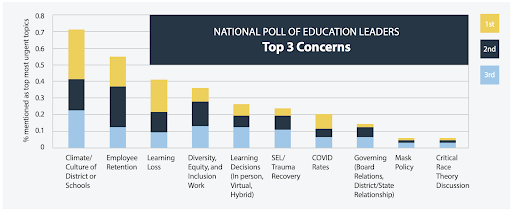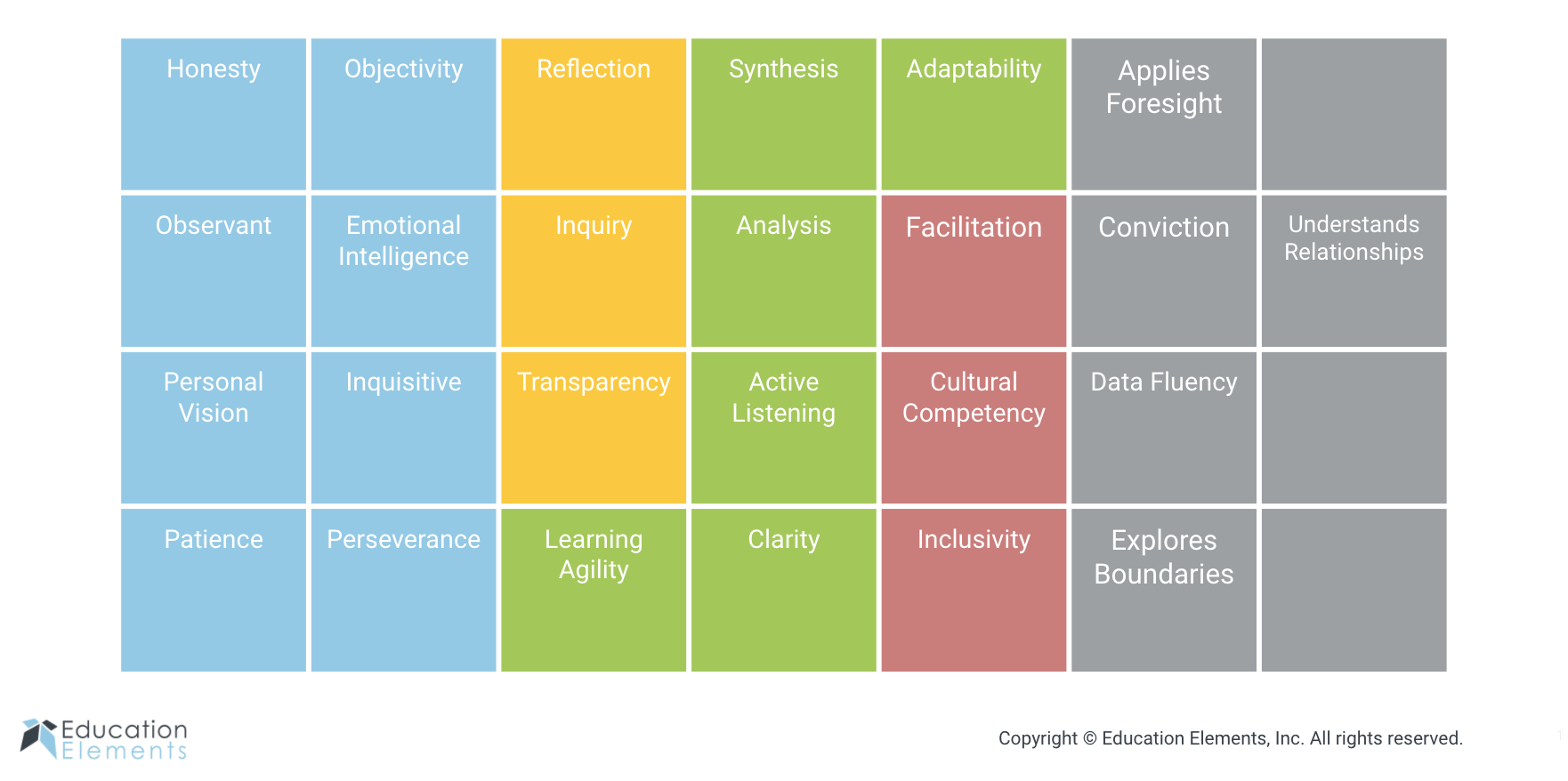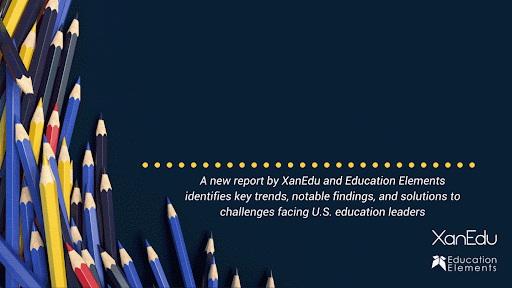As we write this, we are thinking back to the last “normal” month in 2020 before COVID-19 arrived in full force. A sampling of headlines from Education Weekly in February 2020 highlight social and emotional learning, the role of technology in education, and the importance of effective school leadership. With the benefit of hindsight, we can reflections of what we faced then, pre-COVID, in the complex challenges facing school leaders now. Now, with added urgency to prioritize and act on these problems quickly.
Just a few months ago, in order to understand the changing nature of these challenges, we created a survey to gather feedback from leaders in urban, suburban, and rural communities across the country; and we received responses from over 200 educational leaders. The poll revealed that among the top three concerns were - school climate, employee retention, and learning loss, followed closely by diversity, equity, and inclusion work.

These are significant concerns, and we believe that addressing them starts with targeted support for the leaders. After spending over two years in the chaotic orbit of education + COVID-19, educational leaders at all levels became even more adept navigating a changing, complex set of expectations and stakeholder needs, and finding creative solutions.
We believe that now is the time to take a step back and invest in leadership development that builds on their strengths and aligns with often new organizational priorities, that doesn't just solely focus on an individual's traits or expertise. In fact, we believe there is a need to focus leadership development on the individual, the team, and the organization. As organizational leaders work toward solving systemic problems, they need to build their individual skills together, in alignment with the systemic improvements they seek.
Try the process we’re sharing below for a limited window of time--maybe 6-8 weeks (a sprint), and see what you learn about yourself, your team, and your organization.
ASSESS
Organization
- First, ask yourself, what is your top priority for the next 3 months? Do you have concerns about school culture and climate as people are coming back together? Do you worry that teachers are planning to leave?
- Consider if you have the right conditions for learning? Is there a sense of psychological safety on the team? Are you open to new ideas and constructive disagreement?
- Finally, think about whether or not you have sufficient structures for learning? Are there regular times and spaces for sharing ideas and new learning? Are your communication channels open and reciprocal?
If these questions are difficult for you to answer with confidence, share this article and take the survey included with your team. Compare your results, and discuss what the highest leverage focus would be for your team to be able to make progress toward addressing your top priorities.
Individual & Team
- Reflect on your own strengths and areas for growth. Use the organizational needs uncovered (conditions for learning or structures for learning), and think about yourself and your team, and the balance of strengths and gaps that you all bring to the work.
- Use the Elements of Leadership to frame your reflection. If conditions for learning need to be cultivated, explore elements that enhance a sense of belonging (inclusivity, cultural competency, emotional intelligence,) and create space for others to share ideas (inquiry, active listening, facilitation). If structures for learning need to be created or reinforced, dig into the elements that support the generation and processing of knowledge (personal vision, reflection, analysis, synthesis), the ability to run small experiments (inquisitive, perseverance, inquiry, learning agility), and the clear and systemic sharing of knowledge (clarity, conviction, data fluency, and understands boundaries.

PRIORITIZE
Select the element(s) that you will focus on for the duration of the first sprint. You might want to check in with your team, to see if they agree with your area of focus, and to understand their areas of focus so you can all align on whether or not those would combine to help create the organizational condition you need.
PRACTICE
Explore resources for your element, and learn how you can practice that skill in your daily routine. For example, if you decide to focus on developing inquiry, you may want to set a goal to ask 2 clarifying questions and 2 probing questions per day.
TEACH
When you and your team have complete your sprint, host a team retrospective, in which you reflect on your individual practice, share what you learned, and explore what your next steps may be.





